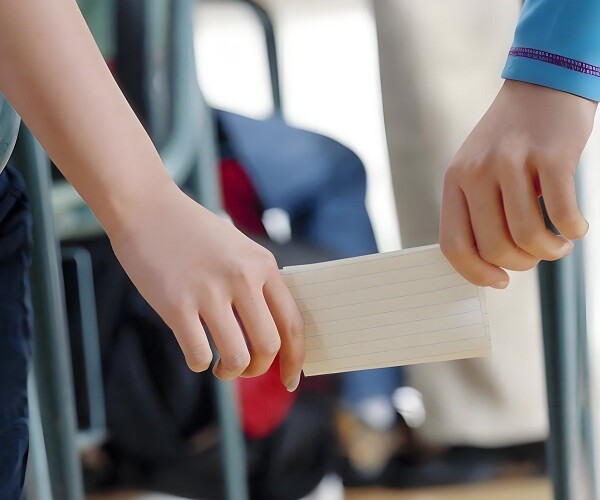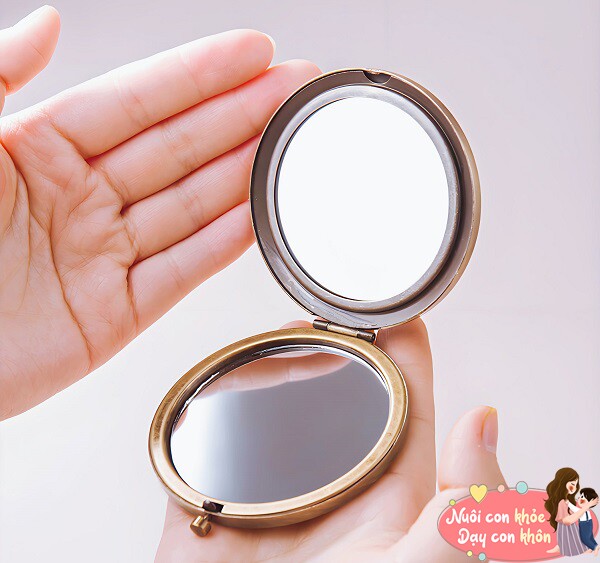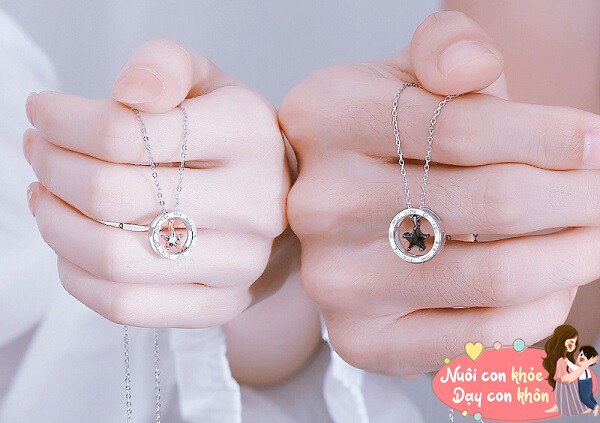As Van Van entered, the salesperson complimented her, “Your skin is so beautiful and smooth. Using this product will make your skin even more gorgeous. Soon, you’ll have a line of suitors chasing after you!”
These compliments took the young girl by surprise and filled her with joy. Van Van had never imagined that her skin would receive such praise. In that moment, her confidence soared.
From that day forward, she loved admiring herself in the mirror and carried a small compact everywhere she went. She began to pay more attention to her appearance, experimenting with beauty products, and learning about skincare. Whenever she passed by a shop selling mirrors or cosmetics, she would linger, relishing the compliments she received from strangers. These words of affirmation fueled Van Van’s motivation to take better care of herself.

One day, Van Van’s mother noticed that her daughter had entered the early stages of teenage love with a male classmate.
This marked a significant shift in her self-perception and the emergence of novel, exciting emotions. The homeroom teacher told Van Van’s mother, “Children who experience young love often develop a penchant for buying special items. Please pay closer attention to her during this sensitive phase.”
As children enter adolescence, they become attracted to the opposite sex and strive to enhance their appearance and stand out. Consequently, they often purchase clothing, accessories, and cosmetics to express their individuality and boost their confidence. This is their way of exploring self-identity and crafting their image in the eyes of others. Thus, when you notice your child developing an interest in these four items during their formative years, it warrants closer attention.

Hand Mirror
When youngsters experience their first romantic stirrings or develop a crush, girls tend to focus intently on their physical appearance. They may spend more time in the mornings before school choosing their outfits and styling their hair.
Girls often feel pressured to meet certain beauty standards. The flawless images portrayed in the media, on social media, and among peers can induce self-consciousness and insecurity. Similar to our own experiences, the worry of having less-than-perfect hair or facial imperfections can be daunting, fearing it might tarnish how others perceive them.
However, this phase is crucial for self-discovery. Girls begin to develop a deeper understanding of themselves, recognizing what makes them feel confident and beautiful. This fosters not only their physical self-care but also their personality development and self-worth.
With proper guidance, these concerns can be channeled into motivation for self-improvement and image enhancement.

Hand mirrors are a favorite accessory for many young girls.

Matching Necklaces or Bracelets
Typically, youngsters experiencing young love seek ways to proclaim their affections. A common way to do so is by exchanging matching necklaces or bracelets. These items symbolize their love and signify a profound emotional connection.
Additionally, these accessories can be discreetly hidden under clothing or in backpacks without parental detection.
Many parents are not present at school, making it challenging to notice these behaviors. Parental busyness with work and other commitments can further hinder their ability to closely monitor their children’s experiences.
However, listening to and communicating with your child is essential. Create safe spaces for them to openly share their emotions, thoughts, and relationships without fear of judgment.

Matching necklaces or bracelets are seen as a form of “engagement” in young love.

Matching Rings
Many children gravitate towards purchasing items that symbolize their love. For instance, matching rings are a popular choice, holding more significance than mere jewelry. They represent a commitment and a profound bond between the two individuals.
Most boys at this stage also view the gesture symbolically, considering the girl as a potential future spouse. While this may seem naive, their emotions are genuine and intense. Exchanging rings is a way to profess their feelings and signify that they have found “the one,” creating a unique connection.
When children decide to give someone a matching ring, it’s more than just a gift. It’s a promise and a declaration of their desire to experience life’s beautiful moments together.
In such cases, parents should help children understand that love isn’t solely about material gifts but also about sincerity and trust. By listening and supporting them through this journey of emotional exploration, parents can instill values of genuine affection.


Wallet
A teacher with over 20 years of experience shared her observation that students experiencing young love often acquire a new wallet, inside which they keep a photo of their crush. Whenever they open their wallet, seeing the photo makes their heart race, filling them with happiness and excitement.
Additionally, if the wallet’s interior design features cute patterns that don’t align with the child’s usual style, it may be a gift from a special someone.
In this case, parents should be vigilant as it could indicate their child is experiencing young love. During this phase, children’s behaviors may undergo noticeable changes. They might become more shy around their crush or, conversely, exhibit excessive confidence. Their conversations may revolve around romantic topics, and they may even start writing heartfelt letters to express their feelings.
In essence, romantic stirrings between boys and girls are normal and play a pivotal role in their personal development. Love teaches them about sharing, respect, and empathy. However, parental guidance is crucial during this phase to help children understand that love should be founded on sincerity, mutual trust, and age-appropriate boundaries.







































